Home »
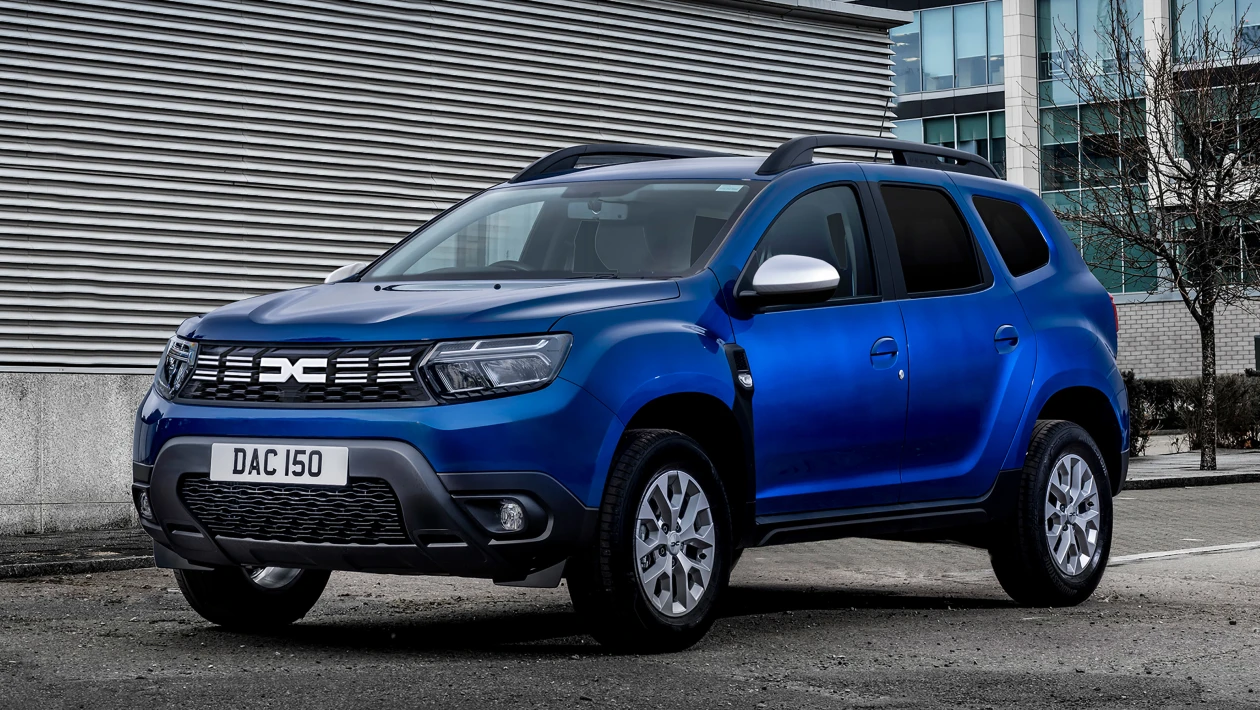
It’s been nearly ten years since Dacia launched in the UK and over that time its cars have become synonymous with value but although the Dacia Duster Commercial is the only LCV offered in Britain it still adheres to the principles of value for money.
It's available at jaw-dropping entry-level price of £13,995 for a front-wheel-drive van or £17,495 for the 4x4. To put that into context you could have nearly three basic Duster Commercials for the price of an entry-level Land Rover Defender Hard Top or two 4x4 models with plenty of change left over. It's more of a rival to a Suzuki Jimny LCV than it is anything else, but really it's in a sector all of its own.
Although the Dacia is basic, it works well as an unpretentious working vehicle with payload that matches the similarly sized (although not four-wheel-drive) Ford Fiesta Van with 1.5x the amount of load volume.
The current Dacia Commercial joins the range with a new trim level and the very latest styling that the passenger car version has recently been updated with.
It gets the new "Link" style badge, and the Dacia lettering is on the rear of the van. There's also plastic trim instead of the car's fancy chrome look silver to give it a more rugged appearance.
The interior gets a similar makeover to the passenger car with the same infotainment system. It's an 8in screen with Apple CarPlay and Android Auto support.
There are two trim levels, Essential and Expression, with prices starting from £13,995 for the base model.
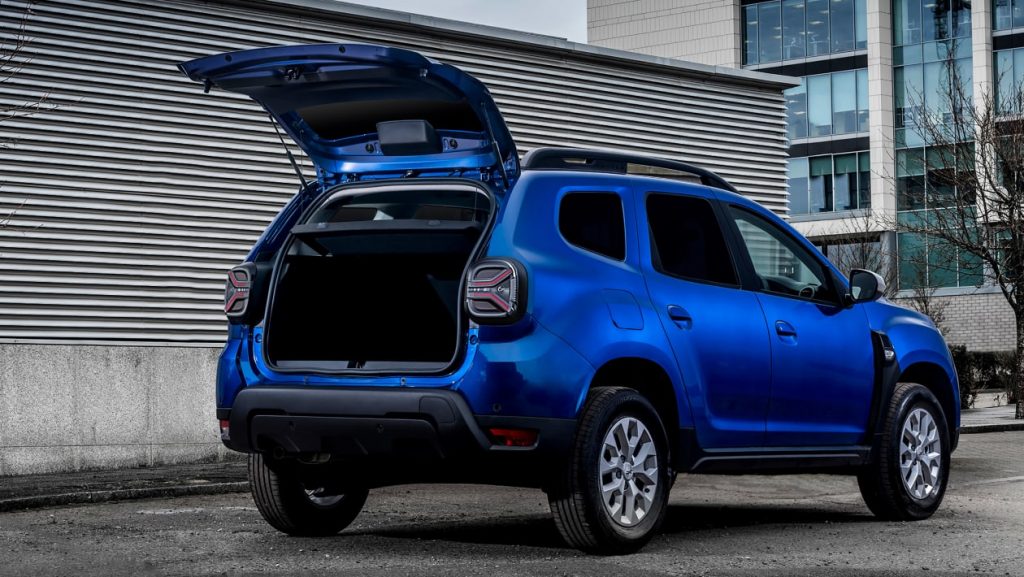
It has a well-rounded range with a choice of petrol or diesel engines delivering brilliant fuel economy. But it is a bit noisy, however, it makes up for it by being fun to drive.
Standard equipment includes air conditioning, electric front windows, cruise control, LED headlights, black roof bars, 16-inch steel wheels, DAB radio with Bluetooth and a USB connection for charging.
The Dacia Duster Commerical is cheap to buy, has low running costs. But being enjoyable to drive and cheap doesn't always work in a van's favour, yet the the Dacia Duster Commercial manages it while also being practical enough for anyone in need of a small commercial vehicle with off-roading abilities.
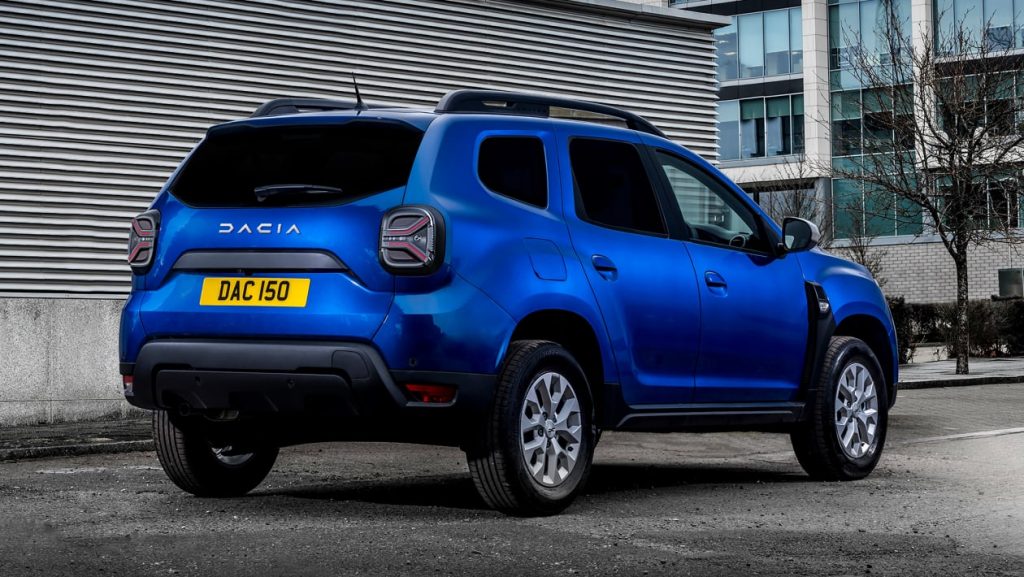
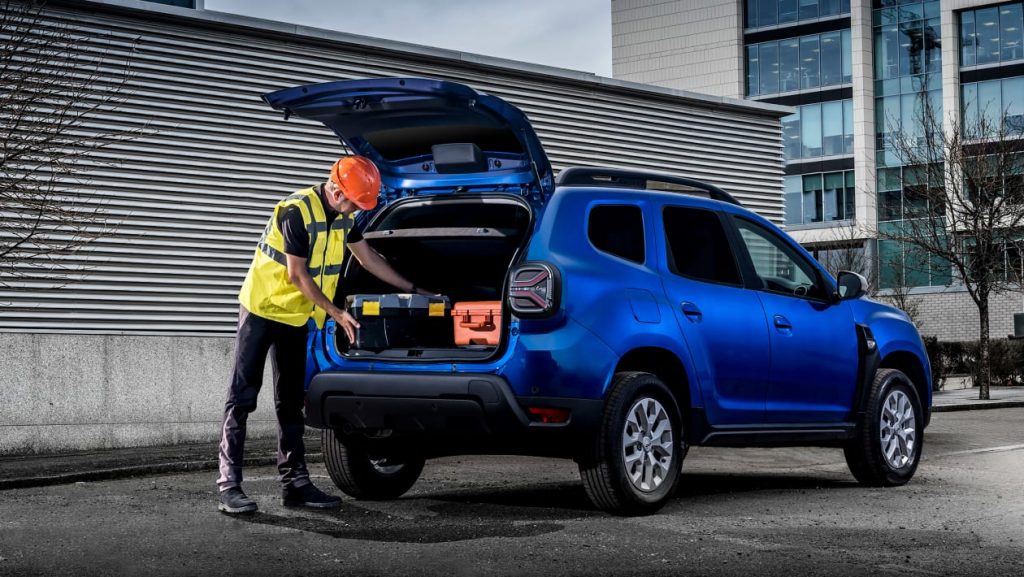
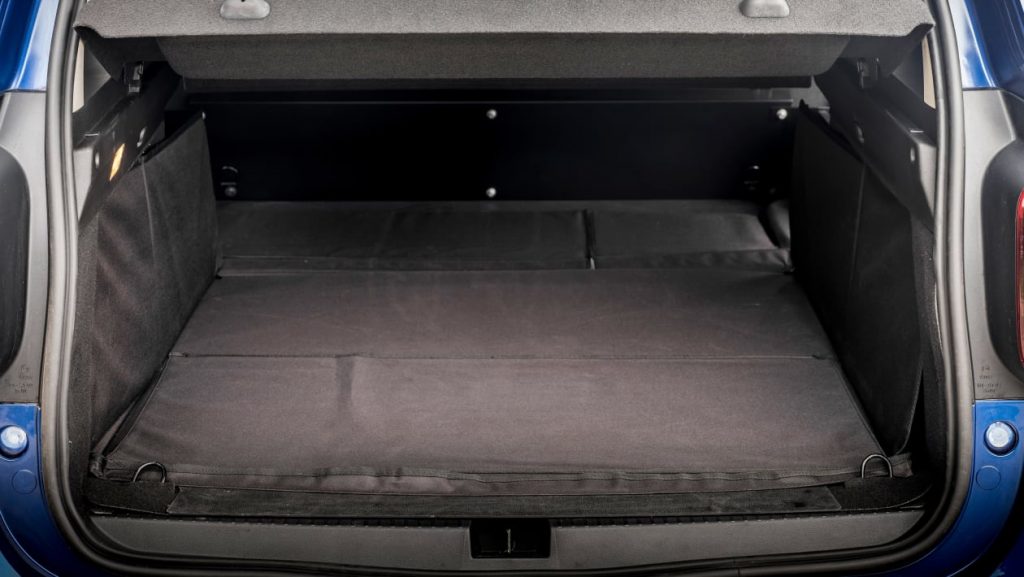
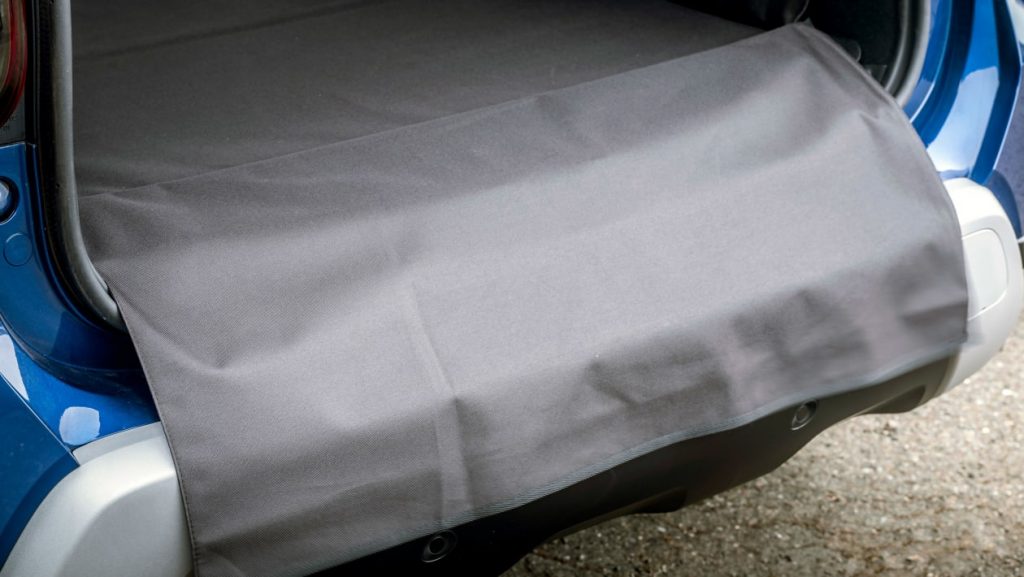
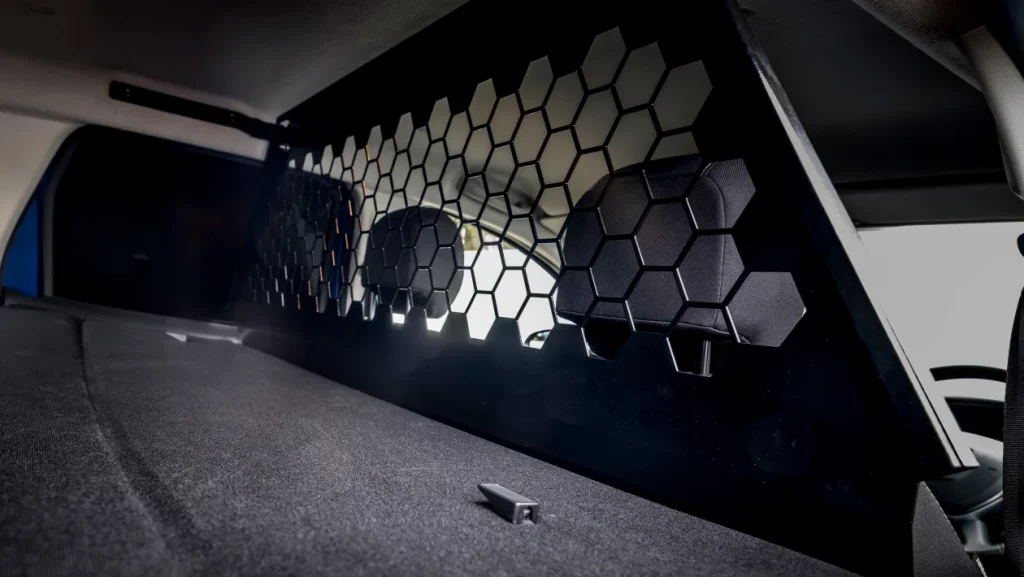
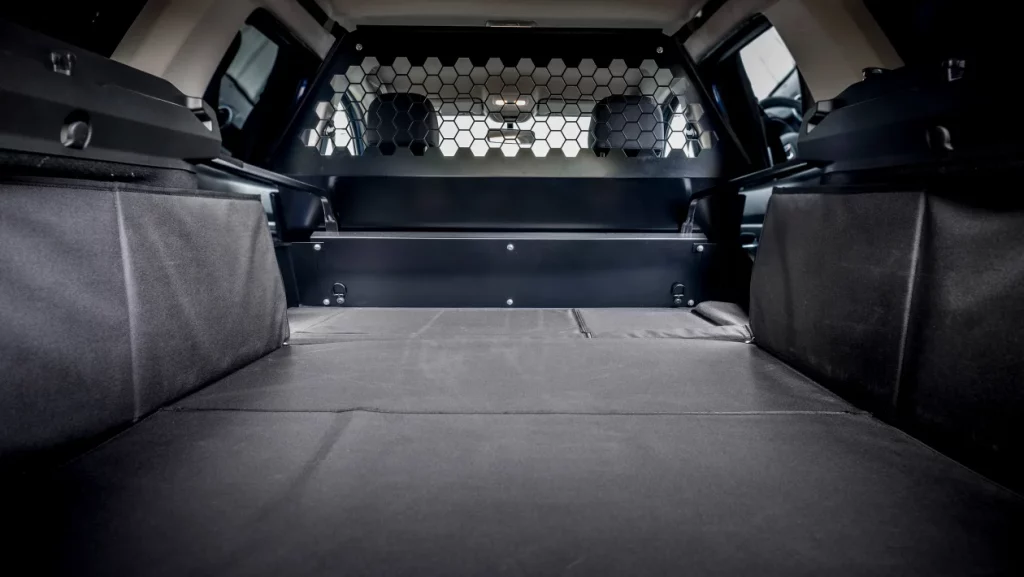
Commercial vehicle SUVs often sit in two camps, they’re either luxurious versions of their passenger car siblings or their bare bones workhorses stripped of any flourishes to make them practical and robust. The Dacia Duster Commercial sits stubbornly in between the two extremes as like the rest of the Dacia range it trades on its value for money appeal as well as a certain back to basics appeal suited to a working vehicle.
The Duster Commercial is based on the regular Dacia Duster passenger car SUV but has been specially converted to give it a loadspace suitable for a working life.
That means the rear seats have been removed and replaced with a flat floor and mesh bulkhead. There’s also a full-length load cover to improve security but rear windows have also been blacked out with an opaque film.
There’s a “Link” logo in white on the front and an updated grilled for the facelifted model. The Dacia name gets put on the rear of the van and the Link logo can also be found on the wheels. The revised front design of the Duster means there’s Y-shaped LED daytime running lights as standard, with black roof bars for added practicality and body-coloured bumpers. Steel wheels are standard but can be upgraded to alloys.
Where SUV conversions to commercial vehicles were once all the rage, they are now relatively few in number. The Dacia Duster Commercial van’s nearest rival is the Suzuki Jimny LCV which is rare as hen’s teeth. However, other light commercial SUVs are available in other sizes include the Toyota Land Cruiser Commercial and the Land Rover Defender Hardtop and Discovery Commercial. Previously the sector was filled with options including more mid-sized models like the Ssangyong Korando Commercial, Mitsubishi Outlander Commercial PHEV, Mitsubishi Shogun and Nissan Pathfinder Van.
More fittingly and size appropriate to the Duster Commercial van, but without four-wheel-drive capabilities, is the Ford Fiesta Van. Other car-derived van conversions include the Toyota Corolla Commercial.
It’s a varied sector that is mostly bodged together from existing car models that then have the back seat removed and some sticky plastic put on the windows to make them more commercial vehicle-like.
The van range consists of three different engines with two petrol outputs and one diesel option.
Petrol-engined Dacia Duster Commercial vans are available with a 1-litre or 1.3-litre engine. The entry-level TCe 90 engine produces 90hp and 160Nm of torque or there’s a more powerful TCe 150 with a 1.3-litre engine producing 150hp and 210Nm. The diesel option is a 1.5-litre Blue dCi producing 115hp and 260Nm of torque. All models meet Euro-6d standard and come with Start and Stop systems to help save fuel.
The Dacia Duster Commercial is available as two-wheel-drive on petrol engines, but is either two- or four-wheel drive on the diesel models. The high-powered petrol van, instead, gets a 6-speed dual-clutch EDC transmission. Entry-level TCe 90 vans and the diesel Blue dCi 115 both make use of a six-speed manual gearbox.
There’s the choice of two trim options, Essential or Expression. And there are even paint colours. Four are metallic - Pearl Black, Arizona Orange, Slate Grey and Iron Blue – or there’s a Dusty Grey colour, Urban Grey or white.
Yes, the Dacia interior is just like the Duster’s car version but that doesn’t mean you’re getting SUV luxury.
There’s a choice of two trims with Essential being lesser of the two options. However, there’s still a high amount of equipment as standard. This includes air conditioning, electric front windows, cruise control with speed limiter, trip computer, Bluetooth DAB radio and USB.
Expression models get a rear-view camera with parking sensors, heated and electrically adjustable door mirrors, different seat material, leather steering wheel, driver’s armrest and a height adjustable seat with lumbar support. Infotainment is provided through an 8-inch touchscreen with Apple CarPlay and Android Auto. There’s also an additional USB port for charging.
When it comes to space, there’s plenty of seat travel for long legged people. For added comfort the steering wheel is also height- and reach-adjustable. On the whole it is a comfortable van to be in for a few hours but it does feel quite narrow, particularly in the footwell where your left leg is crammed in. Two pedal automatics are better, but if you have the manual you’re doing to find that the clutch pedal gets in the way a bit.
You are so very right. This Dacia Duster Commercial is rubbish at cabin storage. There’s a tray in front of the gear stick where you’ll find cupholders and a shelf above a fairly average-sized glovebox. The door pockets are very narrow and you won’t get much more than a 1-litre bottle in the bulging part and nothing more than some bits of rubbish in the narrow part.
Perhaps the best place to store things is behind the seats, but to retrieve them you will likely have to open the rear doors. That’s not a problem, and it’s a great storage place for personal items like a bag to keep them out of sight, but also away from the cargo you might have in the load area.
The 8-inch touchscreen is well worth having, but it is only available on the top trim level. However, that top trim level in the van is actually only the second tier of four in the passenger car. Nevertheless it does give you a good deal of options with parking sensors (you don’t need them, this is a tiny van) and smartphone connectivity.
The rest of the interior is a bit disappointing. It’s those old Renault bits that do it, and the most irritating part of that is that the controls for the radio and infotainment are on a separate stalk low down behind the steering wheel. You can’t see it particularly well, and it’s very easy to nudge the dial that changes the frequency of the radio stations. It gets on your nerves but you’ll get used to it.
Keep in mind that the Duster Commercial van is small. Then, prepare to be amazed. That’s because there’s actually plenty of space with up to 1.5m3 of loadspace. That’s more than both the 0.96m3 of the Ford Fiesta Van, an LCV which is about the same size, but also way still a bit more than the much longer and larger Toyota Corolla Commercial which has a 1.3m3 load volume.
If you need to cary heavy items, the Duster Commercial has a pretty decent headline grabbing figure of 503kg. But… dig a little deeper and that number soon start dipping from the entry-level TCe 90 which its based on.
Want a more powerful petrol engine? That’s minus 20kg. 483kg.
Thinking about an automatic gearbox? Minus 10kg. 473kg.
Don’t like petrol and want a diesel? Add another -10kg for the high trim level Experience van.
It’s a bit of a minefield, but the good news is that the 4x4 Dacia Duster Commercial with a diesel engine actually has a slightly increase payload over most of the other options. The Duster Commercial Blue dCi 115 4x4 has a capacity of 490kg in Essential trim level. Dropping to 471kg for the Experience.
It’s all only slightly larger than the capacity of the Toyota Corolla Commercial which has a with a 425kg allowance, but that’s roughly the difference between having a passenger or not. So, it all adds up.

When it comes to practicalities, the rear loadspace is a different matter. It’s not great if you keep the privacy screen in place and the high bootlip is hard to navigate.
That said, the floor is level with the rear lip, which is a bonus and is often overlooked when it comes to actually putting a load in or out of a van. Another good feature is that the reinforced metal sides adjoining the bulkhead work well in protecting the otherwise exposed side doors from any loose cargo. The last thing you want is for an item to either slip in the gap or to slam into the door causing damage or worse.
Access through those side doors is poor, but the bulkhead is taking up around a quarter of the usable aperture. They’re not really designed to be a functional loading point – more of a quick access hatch. Which they work well at.
The main plus is the quality of the material used to make the conversion. The protective metal is of a decent gauge and the floor load liner is a step above the usual slippery plastic that is often found in car-derived conversions.
The diesel is definitely the most natural fit to the Duster Commercial. While the 1-litre petrol engine enables an attractive sticker price for the marketing material to shout about, it’s not very good. It lacks power and feels lifeless. The 1.3-litre 150hp engine is almost the complete opposite. It’s plenty fast enough but probably a little unnecessary in such a small vehicle. Dacia even quotes a 0-60 time for it of 9.7 seconds. Completely irrelevant for a van but nice to know it’s got some poke.
It’s the 1.5-litre Blue dCi 115 engine with 115hp and 260Nm of torque which is the best engine in the range with early, low down torque to get the Duster moving when you’re fully laden and enough power to comfortably get it up to full speed.
The Duster Commercial uses a bunch of parts from the previous generation of Renaults. While it doesn’t make for a particularly inspiring look in the cabin it does work for the underpinnings. They come together to make a 4x4 with decent handling and ride quality.
The ride is soft but it does well at smoothing out the lumps and bumps of our roads. But it does make it a bit loose in the corners where you’ll notice a good deal of body roll. Four-wheel-drive models get an improved rear suspension to help it cope with the demands of off-roading. An additional upside of that is that it also improves the on-road manners.
You’ll find the Dacia to be quite noisy, but perhaps not in the way you would expect. There is little in the way of engine noise coming into the cabin. However, the converted rear loadspace amplifies the road noise from the rear wheels and there were a few squeaks and rattles from the suspended load security cover and the bolted in bulkhead. Another point is that there are quite a few vibrations from the diesel unit, most noticeable through the transmission.
Those issues aside, the driveline for the Dacia Duster Commercial is rather good. It’s a fun car that is almost dynamic. It’s not sporty, but it responds well to being trashed about a bit and as the diesel or top-powered petrol is not slouch.
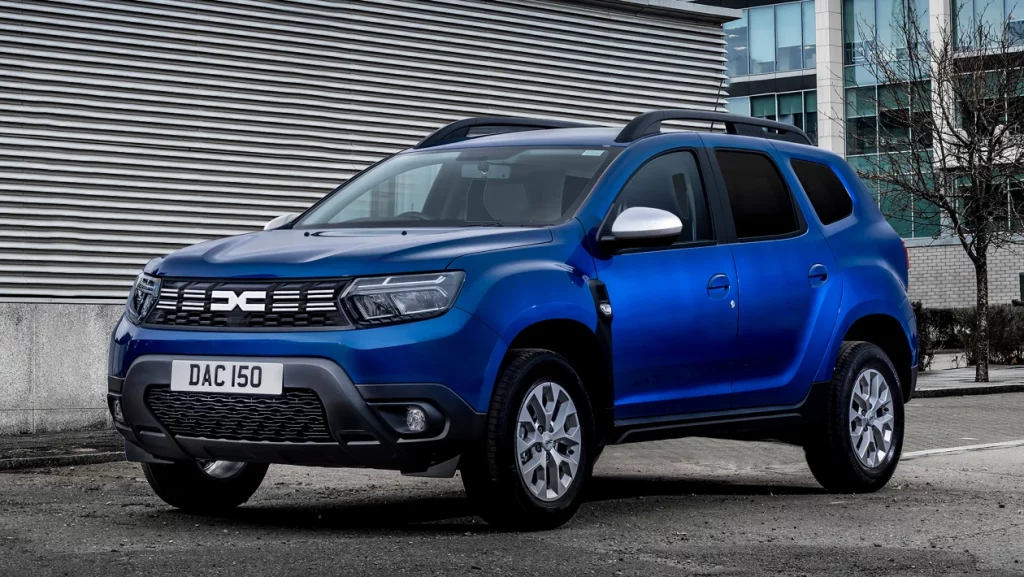
The four-wheel-drive version is only available as the diesel model and while that is the most expensive of all the options it is certainly a surprise package off-road. The Dacia Duster Commercial has a ground clearance of just 210mm – which is definitely not a lot for an off-roader. However, it is remarkably capable of getting off the beaten track. The selectable four-wheel-drive system can do much more than a gravel road and is able to tackle muddy hills or rutted fields with ease. Ok, so there’s quite a bit of noise from the low slung belly as it scraps and bashes over things but as long as you’re not too ambitious the Dacia Duster Commercial is up for some pretty varied 4x4 off-roading. That’s backed up by the 450mm wading depth - high enough to get the water level past the door sills.
The three cylinder 1-litre TCe 90 has a combined fuel economy of up to 45.6mpg according to the WLTP test cycle. The more powerful TCe 150 is rated the same with a 45.6mpg combined economy. The 1.5-llitre Blue dCi engine is slightly better for fuel economy. The 115hp engine in two-wheel-drive has a fuel economy figure of 57.6mpg on the WLTP standard. This equates to CO2 emissions of 127g/km. Opting for the four-wheel-drive model decreases fuel economy to 53.3mpg and emits 139g/km.
The Dacia Duster Commercial is a van that no-one thought they needed, until they found out about it. It fits in an awkward gap between off-roader, little van and cheap motoring.
That’s definitely a compliment, though. Because it drives well, has a respectable amount of practicality – especially if you’re transporting volume – and despite the lukewarm write-up is actually pretty harmless on the inside.
Old Renault parts aren’t a delight to look at but they age well and do the job. There’s an element of cheap and cheerful about the Duster Commercial but it’s a van with a price point and purpose.
It’s definitely worth getting the diesel engine. And the 4x4 system is probably the only real selling point. But that automatically makes it £5k more than the attractive advertised price. Is it worth it? Well, if you need a 4x4 van and don’t want something massive like a Land Cruiser or Defender and several times the price, yes it is.
| Loading dimensions | ||
| 4x2 versions | 4x4 | |
| Loading space (m³) under load compartment cover | 1.5 | 1.31 |
| Maximum payload (kg) | up to 503 |
| Exterior dimensions | ||
| Overall length | 4341 | |
| Overall width without/with door mirrors | 1804/2052 | |
| Unladen height / With roof bars | 1633/1693 (4x2) | 1621/1682 (4x4) |
| Wheelbase | 2673 (4x2) | 2676 (4x4) |
| Front overhang | 842 (4x2) | 841 (4x4) |
| Rear overhang | 826 (4x2) | 824 (4x4) |
| Interior dimensions (mm) | ||
| Load length | 1505 (4x2) | 1577 (4x4) |
| Lead length width | 1792 | |
| Load width Max / Min | 1247 / 977 | |
| Load height Max/ Min | 917 (4x2) | 814 (4x4) |
| Load height at bulkhead | 880 |
| Tce 90 4x2 | Tce 130 4x2 | Tce 150 Auto 4x2 | Blue dCi 115 4x2 | Blue dCi 115 4x4 | |
| Max payload (kg) | 503 | 483 | 473 | Essential: 481 | Essential: 490 |
| Comfort: 463 | Comfort: 471 |